Introduction 🤖📚
Would you like to have a chatbot with ALL your documents in a private database? 🔒
Now with Regolo + Elysia, you can create a true second brain 🧠 powered by Agentic RAG, keeping your knowledge secure while scaling sustainably.
In this article, we’ll explore how to integrate Regolo.ai models into Elysia in a fun, practical way. 🚀
What You Will Learn 🎯
This integration allows you to:
✅ Use Regolo.ai models on your Weaviate datasets
✅ Configure Base Model and Complex Model directly in Elysia’s UI
✅ Create your own FREE databases with Weaviate 🗄️
Never lose information again thanks to your decision-making agent capable of reasoning and tool calling 🛠️
What is Elysia 🌐
Elysia is a framework by Weaviate that lets you build AI agents based on decision trees 🌳.
Its superpower? Information Retrieval with Agentic RAG ⚡ your memory grows with your data, and the only limit is how much you want to feed it.
With Elysia you can:
🌟 Tap into a decision-tree agentic architecture, where the AI dynamically chooses tools (query, summarize, aggregate, custom) based on goals, context, and history all transparent and tweakable.
📊 Use dynamic data displays: tables, charts, doc cards, ecommerce views, conversations… Elysia picks the best format for your data automatically.
🧠 Benefit from built-in data awareness: your collections get summarized, metadata generated, and search suggestions improved for smarter retrieval.
🔁 Rely on a feedback-driven learning loop: thumbs-up responses train the agent over time, letting smaller models perform like giants.
📄 Apply chunk-on-demand document handling: no more wasteful pre-chunking; Elysia splits docs only when needed, preserving context.
Prerequisites ⚙️
🐍 Python 3.12+ and Git installed
🔑 A Regolo.ai API key
Quick Start Guide
1) Get a Regolo.ai API key 🔑
Generate an API key from Regolo.ai and keep it handy.
2) Install Elysia🌐
Open github and follow the elysia installation instructions
3) Start Elysia ▶️
elysia startBrowse on the port that just opened
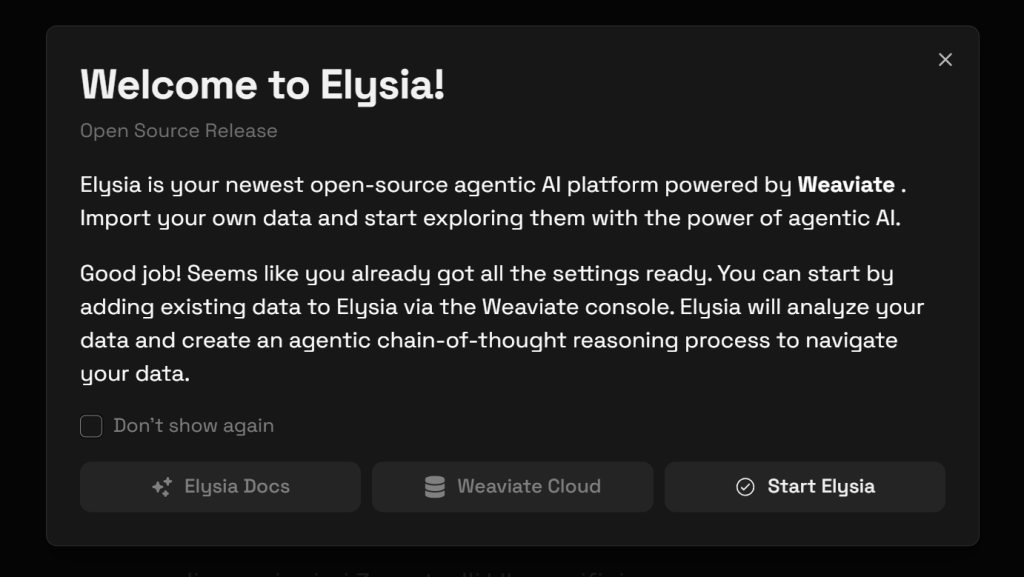
5) Open Settings ⚙️
On the Left side menu navigate to Settings:

6) Run Weaviate Locally for Your Regolo + Elysia Environment 🔗
You can install Weaviate on your own machine or server to manage your document embeddings and vector search without relying on any external services.
Here’s a quick guide to running Weaviate self-hosted.
Quickstart: Run Weaviate Locally with Docker Compose
1. In your project directory, create a file named docker-compose.yml with the following content:
services:
weaviate:
image: cr.weaviate.io/semitechnologies/weaviate:1.33.0
ports:
- "8082:8080"
- "50051:50051"
environment:
QUERY_DEFAULTS_LIMIT: 25
AUTHENTICATION_ANONYMOUS_ACCESS_ENABLED: 'true'
PERSISTENCE_DATA_PATH: '/var/lib/weaviate'
ENABLE_MODULES: 'text2vec-ollama,generative-ollama'
CLUSTER_HOSTNAME: 'node1'
volumes:
- weaviate_data:/var/lib/weaviate
restart: on-failure:0
volumes:
weaviate_data:
Code language: YAML (yaml)2. Start Weaviate Using Docker Compose:
docker-compose up -d3. Once running, your Weaviate instance will be available at http://localhost:8082.
All vector data will be stored persistently inside the Docker volume weaviate_data.
4. Test the connection:
import weaviate
client = weaviate.connect_to_custom(
http_host="localhost",
http_port=8082,
http_secure=False,
grpc_host="localhost",
grpc_port=50051,
grpc_secure=False
)
try:
print(client.is_ready()) # Should return True if server is active
finally:
client.close()Code language: Python (python)Further Configuration and Options
- You can enable additional modules such as
text2vec-openai,qna-transformers, orgenerative-ollamaby editing theENABLE_MODULESenvironment variable. - For production or distributed setups, Weaviate also supports Kubernetes deployments.
- Data persistence is handled automatically through the
/var/lib/weaviatedirectory. - Official SDKs are also available for JavaScript, Go, and Java, making integration with Elysia and Regolo seamless across different environments.
For more technical details, refer to the official Weaviate documentation:
Quickstart Local Installation ·
Client Connections ·
Deployment Guides
7) Upload your Documents 🤖
We created a personalized document embedder based on Regolo’s Qwen3-Embedding-8B, it directly uploads the extracted data in your 8082 weaviate database, ready to chat.
You can find it and use it on github (copy it on a dedicated folder):
git clone https://github.com/regolo-ai/regolo-docs-embedderCode language: PHP (php)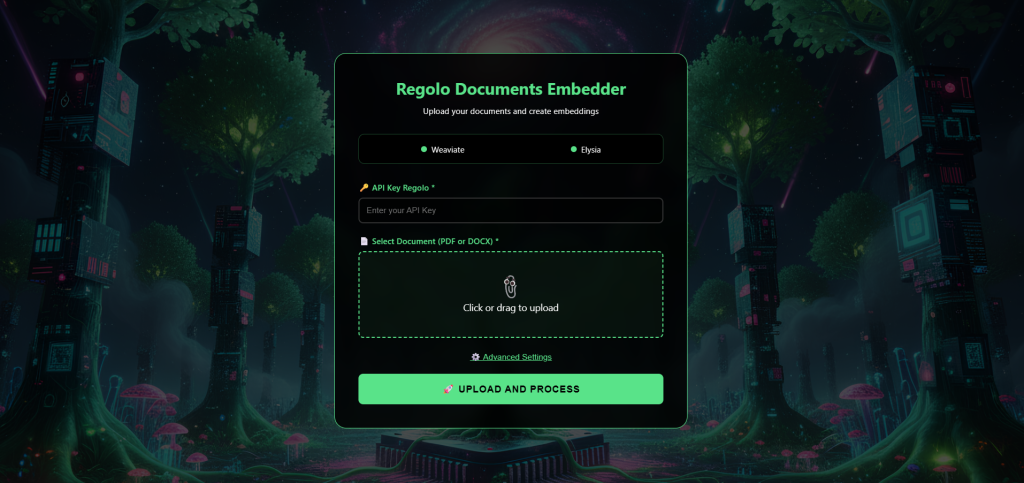
8) Configure the Database on the Platform 🤖
Paste the DB Settings into Elysia (Use the same settings for Weaviate Cluster and Elysia Storage)
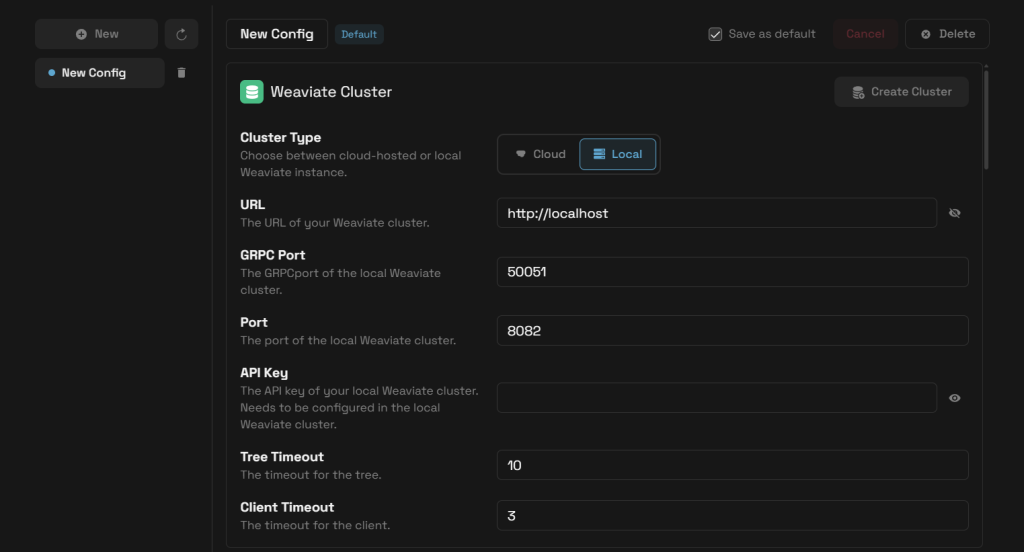
9) Agent Setup 🤖
You Can Modify it as you want, it depends on you Elysia final goal
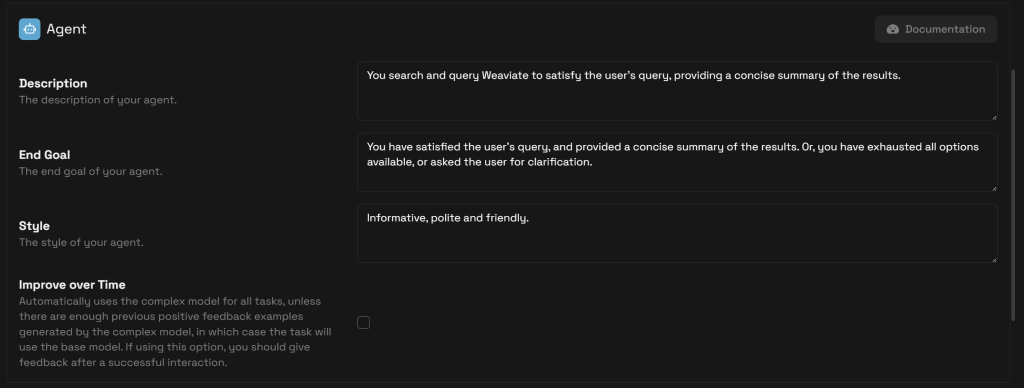
10) Base Model – Regolo Configuration 🧩
In this section you have to use “openai” provider and write the name of a custom Regolo model (example : Qwen3-8B )

11) Complex Model – Regolo Configuration 🧩
As in the previous step, insert your favourite Regolo Big Model
# our advice is to use one of
Llama-3.3-70B-Instruct
gpt-oss-120b
deepseek-r1-70b) Code language: CSS (css)with “openai” Provider

12) Base URL 🌍
This step is crucial, insert the Regolo Base Url:
https://api.regolo.ai/v1Code language: JavaScript (javascript)You should get something like this:
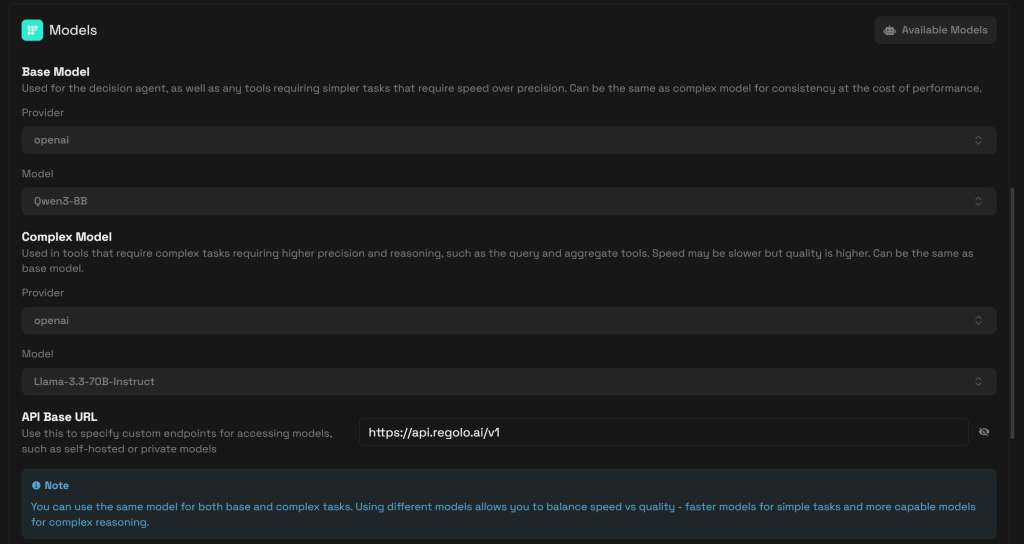
13) Api Key 🔑
In the Api Keys Section insert both “regolo_api_key” and “openai_api_key” (same value) like this:

🎉Finished ! 🎉
That’s it, your Elysia + Regolo setup is live!
Now you can chat with your private data, explore your Weaviate collections, and let Regolo power your second brain whenever you want. ⚡

